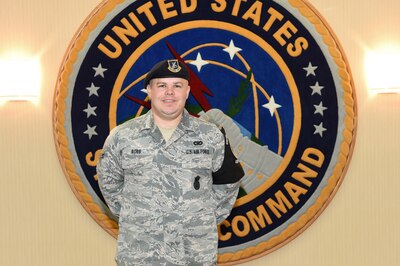WASHINGTON, Dec. 19, 2017 — The departments of Agriculture,
Defense and Interior have designated southern Georgia as a Sentinel Landscape
to maintain military readiness while preserving local agriculture, natural
resources and wildlife habitat, Defense Department officials announced today.
Spanning a significant portion of the southern part of the
state, the Georgia Sentinel Landscape joined the cooperative partnership
between DoD and the Agriculture and Interior departments, DoD officials said.
In July 2013, the departments launched the Sentinel
Landscapes Partnership through a memorandum of understanding to meet three
critical goals: preserve working and agricultural lands, restore and protect
wildlife habitat, and assist with military readiness.
The first designees were Joint Base Lewis-McChord in
Washington, Fort Huachuca in Arizona and Patuxent River Naval Air Station in
Maryland. These designees were joined in 2016 by Avon Park Air Force Range in
Florida, Camp Ripley in Minnesota and Eastern North Carolina, officials said.
Vital to National Defense
Through the Sentinel Landscapes Partnership, the federal
agencies work with state, local and private partners to preserve working and
natural lands important to the nation’s defense mission.
“This announcement represents a major accomplishment in the
effort to protect our land, promote the livelihoods of hardworking Americans,
and ensure our nation’s defense,” said Lucian Niemeyer, assistant secretary of
defense for energy, installations and environment.
“Maintaining working and natural lands across southern
Georgia will not only provide critical habitat for a number of important
species and promote the economies of rural communities,” Niemeyer said, “but
also enable the military to continue to test, train, and operate at nine key
military installations in the state.
“The Sentinel Landscapes Partnership is an innovative
initiative that protects critical Department of Defense missions through
efficient government and private-sector collaboration,” he continued. “This is
a true win for warfighters, taxpayers and the citizens of Georgia.”
Partnership Core Characteristics
Led at the local level, stakeholders work together to ensure
that each Sentinel Landscape possesses three fundamental components, according
to the partnership’s website:
-- An anchor military installation with a military mission
that benefits from compatible land uses outside of the installation’s
boundaries
-- A defined landscape that is associated with the anchor
installation’s “mission footprint.” Within this landscape, government agencies,
private parties, and nongovernment organizations coordinate their programs in
support of ranching, farming, forestry and conservation with the full
involvement and partnership of the landowners in the landscape; and
-- A coordinated and collaborative strategy or plan that
provides incentives and recognition to participating landowners, who adopt and
sustain land uses compatible with the military mission while providing tangible
benefits to conservation and working lands within the landscape.
Benefits of Newly Designated Landscape
DoD officials said the Georgia Sentinel Landscape
encompasses vital military ranges needed to test and train to meet threats as
they arise and supports strong and effective conservation partnerships.
The Georgia Sentinel Landscape brings together more than 20
partners at the federal, state, and local levels to sustain working farms and
forests and protect vital habitat for a number of important species, thereby
promoting land uses compatible with the military mission.
Efforts to coordinate mutually beneficial programs among
partners in this landscape will promote the military missions of nine important
installations and ranges in Georgia, including Fort Stewart, Fort Benning, and
Townsend Bombing Range. The military network stretching over the southern portion
of the state provides a wide variety of test, training, and operational
resources and capabilities to service men and women from each of the military
services, including heavy armor maneuver areas, unimpeded air-to-ground
training, live-fire training facilities, and low-level flight routes.
Building on a legacy of successful, collaborative land
protection in the state, partners from the Natural Resources Conservation
Service, U.S. Forest Service, U.S. Fish and Wildlife Service, the military
services, the state of Georgia, and a number of private conservation
organizations have identified about 1.3 million acres as critical to important
natural resources, working economies, and military readiness within the
landscape’s boundary.
Leveraging Goals, Shared Priorities
The landscape partners seek to leverage a broad set of goals
and shared priorities to not only ensure the continued viability of important
military installations, officials said, but also promote the protection of
habitat corridors for a number of important species, including the gopher
tortoise, red-cockaded woodpecker, eastern indigo snake and other species of
concern.
Partners hope to protect more than 20 additional viable
gopher tortoise populations in the next five years to make it unnecessary to
list this species under the Endangered Species Act, officials added.
The Georgia partnership also seeks to protect a core of at
least 5,000 acres of important farmlands in four focus areas within the next
five years, as well as more than 136,000 acres in the Savannah River watershed
over the next 20 years.
Additional goals of the partnership include increasing
public access to outdoor recreational opportunities, improving management
practices on private lands and expanding outreach activities to private
landowners within the landscape.
“This collaborative effort is a clear example of the value
of working across conventional boundaries,” Niemeyer said. “When partners at
the federal, state, and community levels work together towards a common goal, everyone
wins. The Sentinel Landscape program brings together the resources of multiple
federal entities in collaboration to promote common interests for military
readiness, support for the warfighter, and the safety and security of this
nation.”









